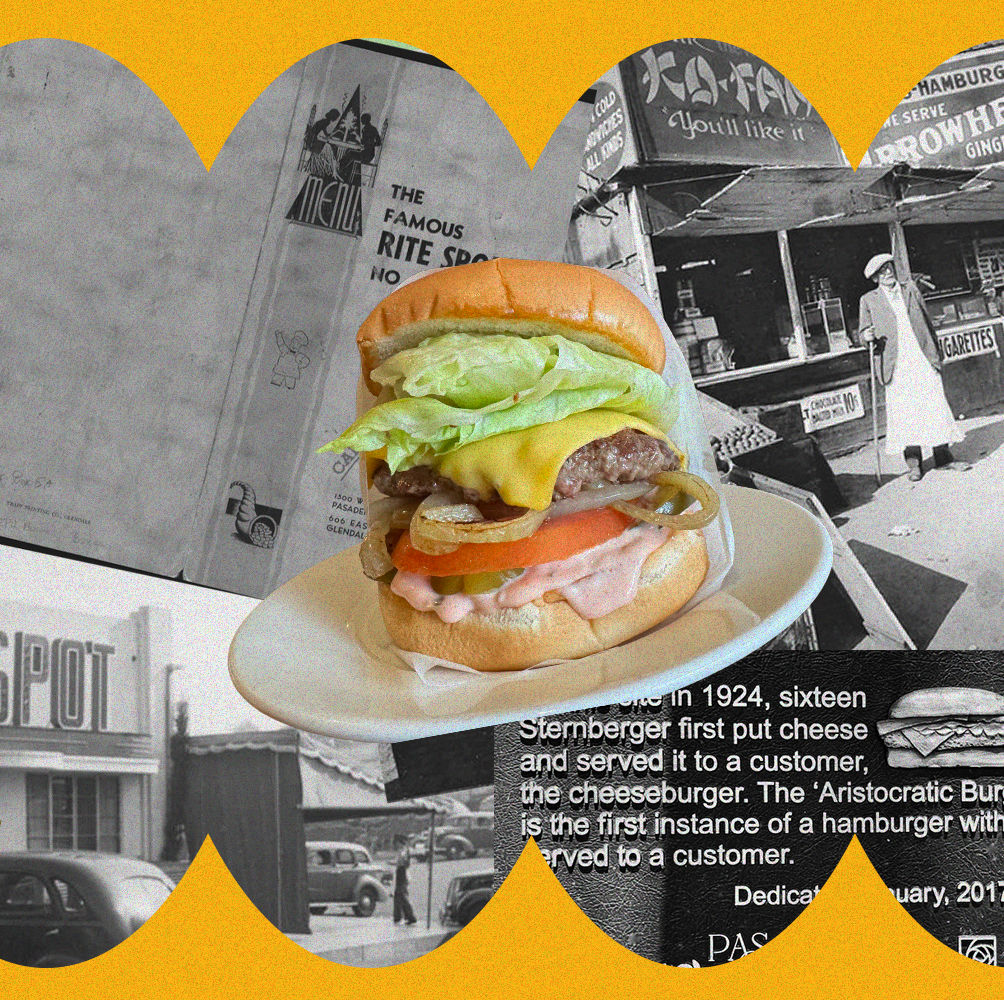Eating is not what it used to be. Around the world, cuisines are ever intermingling, and diners’ options continue to expand. However, with great privilege comes great responsibility: producing and consuming food in ways that are kinder to the environment. In the quest to become more sustainable, movements like regenerative food are no longer a fad but are a necessity. And it starts at the source.
“There’s no perfect definition to regenerative farming,” says Lee Jones, a farmer and author of The Chef’s Garden: A Modern Guide to Common and Unusual Vegetables — With Recipes. “It’s what we can do to grow a healthier, more nutritious product; to take care of the land; to prevent erosion, reduce water consumption, prevent chemicals going to the lakes and tributaries.”
Jones runs his family farm the Chef’s Garden in Huron, Ohio, using methods aimed at keeping the soil nutrient-rich. He plants multispecies cover crops, such as sorghum, clover, and alfalfa, which might not have high-selling value but help keep the soil in balance for future harvests.
“We have a saying: ‘Healthy soil, healthy vegetables, healthy people, healthy environment,’” Jones says. Such a commitment to farming with attention and intention sits at the heart of regenerative food, and many cooks are taking it further in their approaches to eating well.

Stewards of the land
Elizabeth Poett’s evocative book The Ranch Table: Recipes From a Year of Harvests, Celebrations, and Family Dinners on a Historic California Ranch transports readers to the historic Rancho San Julian on California’s Central Coast. Poett is a seventh-generation cattle rancher whose chaparral lands span 14,000 acres.
“Our one and only job is to make sure that we are taking care of this land, to be stewards of the land,” Poett says. She and her family raise free-range cows, turkeys, and sheep; plant fruits, vegetables, and lavender; and produce honey — all in sustainable ways. Among them is rotational grazing, so their herds are moved around for the pastures to rest and replenish.
The Ranch Table moves through the seasons, detailing the rhythms of the ranch from spring plantings and summer pasturing to autumn harvests and winter feeding. “You can really see a change in not only the weather but also the landscape,” Poett explains, “and I wanted to show how that’s connected to the food and the things that we eat throughout an entire year.”
On branding day, new calves get their vaccinations and are marked with a Rancho San Julian brand. The job requires neighbors and family members to pitch in, so Poett organizes a table to feed a large crowd. Buttermilk cinnamon rolls prepared the night before and baked before dawn along with pistachio bread help to fuel the ranchers through the morning. Lunch break requires something more substantial: braised brisket sliders stewed in the oven, best served with cabbage slaw and tall glasses of Arnold Palmer spiked with whiskey.
When the workday is done, the ranchers sit down for a hearty Central Coast barbecue. The tri-tip, a triangular cut from the sirloin tip, is seasoned with garlic and thrown on the grill, paired with a hand-cut pico de gallo and a steaming pot of beans. Poett shares her Tio Dibb’s recipe of pinquito beans with bacon, dried herbs, chile sauce, and a flourish of sherry. Fudgy brownies laced with soft caramel candies and flakes of sea salt cap off the meal.
“Ranching is a ton of work, but it’s important to really take the time and enjoy all the work we have done,” Poett reflects. “A good meal fixes every problem.” The mantra guides her philosophy of cooking in a relaxed and joyful way while strengthening the bonds of family and the terrain that ties them.
“I really love that connection between raising food and growing food and then eating and cooking food,” Poett says. “To have a ranch in our family for as long as we have, I think we have a real responsibility to the land so that we can leave it to the next generation hopefully better and stronger.”

Every part of the plant
A planet-friendly diet may begin at the producer, but it ultimately comes down to the consumer. Bread and Roses: 100+ Grain-Forward Recipes Featuring Global Ingredients and Botanicals offers a laser focus on grain-forward recipes that incorporate botanicals from across the globe. This insightful debut from Rose Wilde invites cooks and bakers to rediscover whole grains: their versatility, nutrition, and practicality.
“Grains are so, so foundational,” Wilde shares. From traveling the world, she noticed that different cultures serve food in intriguing ways, but there is always some item made from grains. “It’s so nutritional, so tasty, and different from each other,” she adds. “You can cook with it and have it boiled, cold, and tossed in a salad. It can be a base for a complicated pilaf with lentils and meat. Or it can be ground into flour and made into cookies, cakes, and bread.”
The book highlights the myriad grains found across the continents, such as amaranth, teff, millet, einkorn, sonora, and Khorasan wheat. These grains are almost always consumed intact — whole, as it were — retaining their nutritional values and properties that help humans digest them.
“We have abundant sources of white flour here that [aren’t] the default in other parts of the world,” she says. “Historically, white flour has been thought of as for royalty.” That’s because white flour uses only the starchy endosperm of a wheat grain. The protective layer of bran and inner wheat germ are stripped during the milling process, unlike wholemeal flour, which retains every component.
“We are now ingesting the most difficult, most biologically locked part of the grain,” Wilde contends. “I think our options have been artificially downgraded, and there’s so much more to taste and enjoy. And some of it is naturally gluten-free.”
The pages of Bread and Roses read like a geographic guide of grain, as Wilde introduces both foreign and familiar treats using whole ingredients endemic to a particular region: from Asia, barley miso cookies; from Europe, emmer sourdough pasta; quinoa churros from the Americas; and durum fried cheese pastries from Africa.
Wilde believes in using every part of the plant in what she calls root to blossom, basically the floral version of the nose-to-tail approach to faunal cooking. She does not treat flowers like mere garnishes or accents. “They are fully integrated into the bakes,” she says, referring to tantalizing recipes such as cherry crisp with ground cherry blossoms, jam with red currant and violets, as well as one of her favorites, roasted sunflower butter.
Wilde’s joy for grains and blossoms imbues her book from cover to cover. Her ethos of eating whole is directly aligned with the regenerative food scene, and she’s quick to stress that it’s all about eating more, not less. “My approach to sustainability is not about what we have to change and lose because that’s scary,” she says, “but what we can celebrate, what’s abundant, what’s beautiful, and what’s so accessible.”

Leave a lighter footprint
Cooking in ways that make use of everything at one’s disposal is also the thrust of ScheckEats — Cooking Smarter: Friendly Recipes With a Side of Science. The book is the brainchild of social media sensation Jeremy Scheck, better known to his millions of TikTok followers as Scheckeats. It builds on his cooking videos created while he was at school during the Covid pandemic.
“We were forced to leave early,” Scheck recalls. “I was packing up my apartment, and I had all these ingredients that I had to use up before I left indefinitely.” This jumble of packets, cans, and boxes in a college student’s pantry became the genesis of a hit video channel and also forms the bedrock of the book.
Cooking Smarter espouses that one can make marvelous meals with a reliable larder of staple ingredients. The list of 70-odd items spans from oils, vinegars, and dried goods to condiments, seasonings, and plants. “Focusing on the practicality,” Scheck says, “you never have to buy several or many additional ingredients for any given recipe.”
One component of this is cost-saving. By using these supplies repeatedly, grocery bills are not unnecessarily inflated with esoteric things that may only be used once. Another is the reduction of waste. Cooking smarter equals cooking sustainably. No more caked-out asafetida or expired meringue powder in tins and plastic bags thrown into the garbage bin.
Scheck’s recipes do not forsake creativity or taste for the good of the planet. The Neapolitan aglio e olio, crispy spiced chickpeas, and cranberry carrot cake rely solely on his set of staples but will wow any guest at the table. The instructions are methodical, amusing, and often peppered with pertinent explanations of science, a skill Scheck honed teaching classes at Williams-Sonoma while in high school combined with his academic focus in food science. “I really wanted to toe the line,” he says, “between being accessible to someone who might be a beginner cook but not boring to someone who has a lot of experience.”
Roughly three-quarters of the recipes in Cooking Smarter are vegetarian, partly because, Scheck says, “It reflects the way a lot of people are eating right now.” He calls vegetables the most important part of the meal and tries to incorporate other sources of protein to replace meat — not a rejection of meat but a mere reminder that plant-based diets leave a much lighter footprint.
“With all the delivery services that we have and everything that can be just ordered from our phone, a lot of people are less likely to cook,” Scheck muses, “but it’s probably better for our health, our environment, and our wallets to be cooking more for ourselves.”



